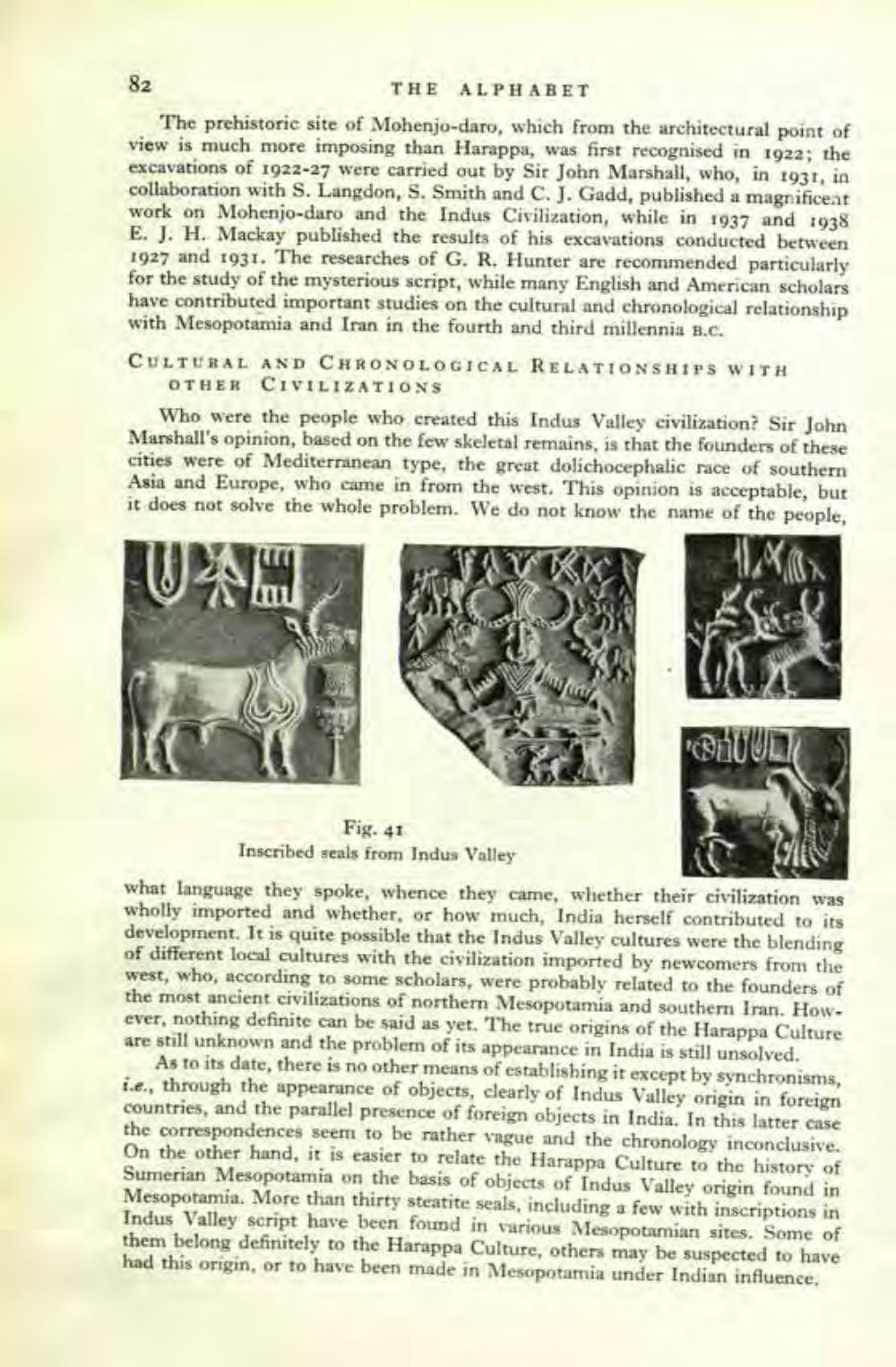________________
82
THE ALPHABET
The prehistoric site of Mohenjo-daro, which from the architectural point of view is much more imposing than Harappa, was first recognised in 1922; the excavations of 1922-27 were carried out by Sir John Marshall, who, in 1937, in collaboration with S. Langdon, S. Smith and C. J. Gadd, published a magnificent work on Mohenjo-daro and the Indus Civilization, while in 1937 and 1938 E. J. H. Mackay published the results of his excavations conducted between 1927 and 1931. The researches of G. R. Hunter are recommended particularly for the study of the mysterious script, while many English and American scholars have contributed important studies on the cultural and chronological relationship with Mesopotamia and Iran in the fourth and third millennia B.C.
CULTURAL AND CHRONOLOGICAL RELATIONSHIPS WITH
OTHER CIVILIZATIONS
Who were the people who created this Indus Valley civilization? Sir John Marshall's opinion, based on the few skeletal remains, is that the founders of these cities were of Mediterranean type, the great dolichocephalic race of southern Asia and Europe, who came in from the west. This opinion is acceptable, but it does not solve the whole problem. We do not know the name of the people,
AU
I
1
UUD
Fig. 41 Inscribed seals from Indus Valley what language they spoke, whence they came, whether their civilization was wholly imported and whether, or how much, India herself contributed to its development. It is quite possible that the Indus Valley cultures were the blending of different local cultures with the civilization imported by newcomers from the west, who, according to some scholars, were probably related to the founders of the most ancient civilizations of northern Mesopotamia and southern Iran. How. ever, nothing definite can be said as yet. The true origins of the Harappa Culture are still unknown and the problem of its appearance in India is still unsolved.
As to its date, there is no other means of establishing it except by synchronisms, i.e., through the appearance of objects, clearly of Indus Valley origin in foreign countries, and the parallel presence of foreign objects in India. In this latter case the correspondences seem to be rather vague and the chronology inconclusive. On the other hand, it is easier to relate the Harappa Culture to the history of Sumerian Mesopotamia on the basis of objects of Indus Valley origin found in Mesopotamia. More than thirty steatite seals, including a few with inscriptions in Indus Valley script have been found in various Mesopotamian sites. Some of them belong definitely to the Harappa Culture, others may be suspected to have had this origin, or to have been made in Mesopotamia under Indian influence,




